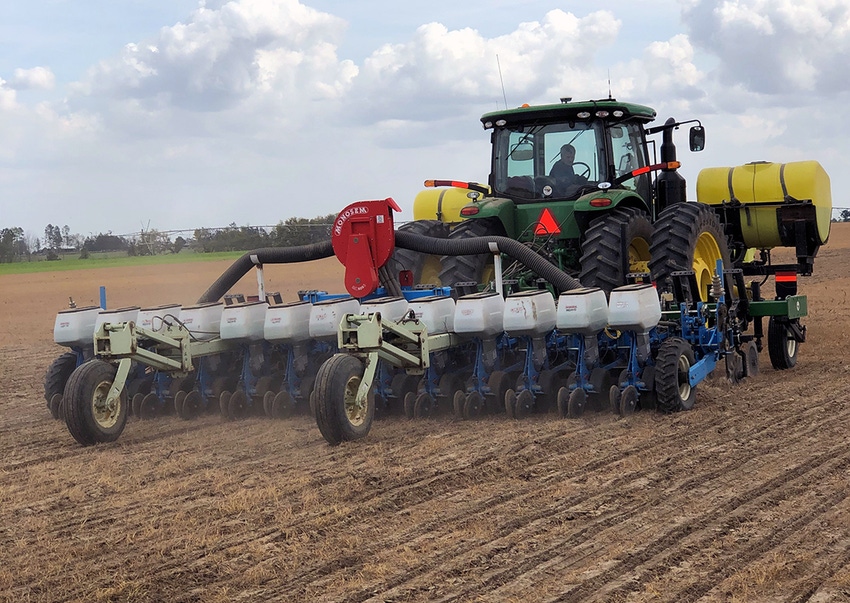
The COVID-19 pandemic evolves now at a fast pace. Across the Deep South, skies remained clear, soil temperatures adequately rose, and farmers moved corn planters into fields and kicked into high gear the 2020 U.S. planting season.
Rome Ethredge, a crop consultant in southwest Georgia, pulled up to check a recently planted corn field in Seminole County, Ga., near the Florida state line March 13. He was talking with Southeast Farm Press on the phone when he did. The field was planted the Monday before, and the corn was nearing germination on its way to a good stand, he said.
"We're getting some good germination now. The soils have really warmed, and this corn is moving," he said, adding that some earlier planted corn, particularly sweet corn in the area, had taken as long as 21 days to germinate after planting due to cooler soil conditions. Corn planted in soil higher than 55 degrees at the two-inch depth emerge within seven days to 12 days.
Over in southeast Alabama, cattle still grazed the land Jody Childs planned to plant corn on starting April 1. During harvest, getting semis lined up for loading in fields is a typical logistical challenge for growers in his area. He heard things could be even tighter this harvest season. He has an on-farm bag storage system and he'll use it as needed, he said, if semis get bottled up at the buying point.
In Randolph County, Ga., Jason Sauls planned to start planting his family's 1,500 acres of corn within the next few days. It'd been wet winter and early spring, but his fields were ready, and he didn't feel behind on planting, yet.
Farm-level commodity prices remain suppressed, something U.S. growers have faced for more than five years due to oversupply of staple commodities, such as corn. Childs said no one crop "is being shouted to be planted," economically speaking. The uncertainty of the global COVID-19 epidemic is concerning, but Childs and Sauls and other farmers are sticking to the course and planting now.
"I'm an optimist," Childs said.
Conditions were drying quickly, which helped growers continue land preparation and corn planting. Ethredge said some growers in Seminole County started center-pivot irrigation systems to help the corn along. A corn fields is off to a good start yield wise if all plants in it emerge within 12 hours to 24 hours of the first plants to emerge.
Childs will plant mostly Dekalb but some Croplan corn varieties this year on 36-inch rows with a population of 27,000 or so plants per acre. He tried a friend's twin-row planter last year. He liked it and was thinking about it again this year on some acres. Sauls will plant Pioneer 1870. He says it does well across a lot of different soil types. He'll also plant Agrigold, Dekalb and Dyna-Gro varieties, too, on 36-inch rows at plant population of 34,000 per acre.
Ethredge said more corn may be planted in his area, but not much more than previous years. He said weather may affect final planting intentions, but most growers he works with will stick close to their traditional crop rotation with cotton, peanut and corn. Childs and Sauls planned to stick to their traditional corn, cotton and peanut rotations.
A version of this story will appear in the March 25 print issue of Southeast Farm Press.
About the Author(s)
You May Also Like






